Chattering teeth, Bubble Gun, KerPlunk: At 102, toy inventor Eddy Goldfarb is still dreaming up ideas
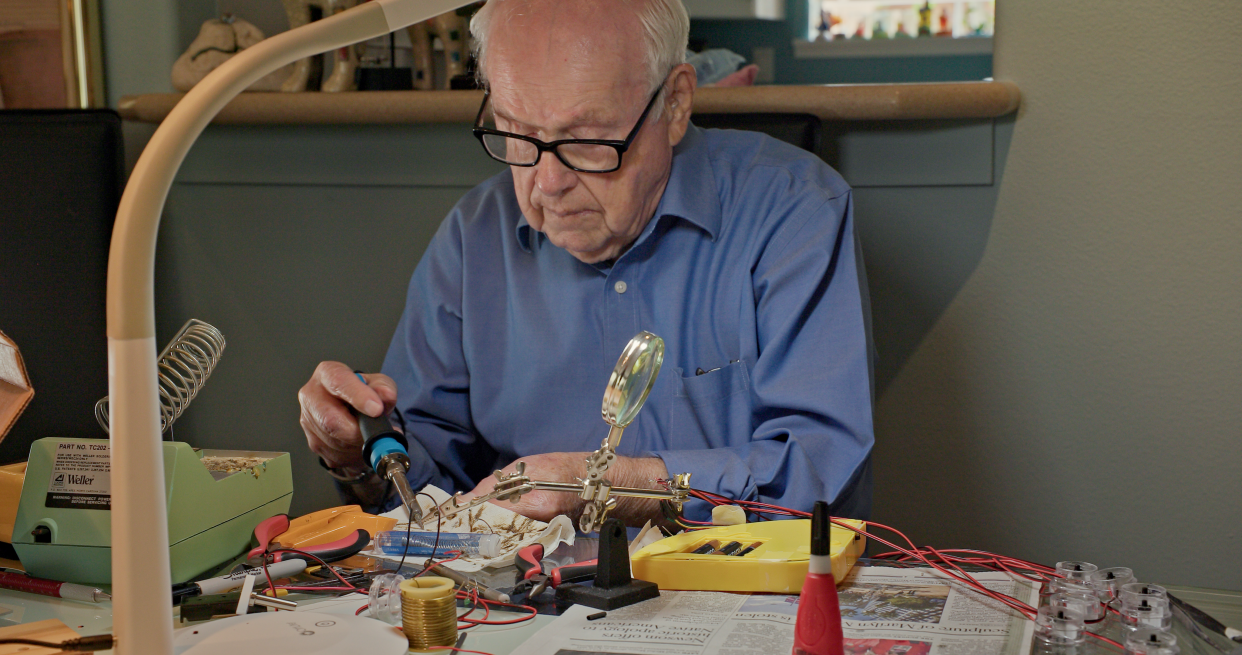
At 102 years old, Eddy Goldfarb, the creator of some of the world's most beloved toys, refuses to slow down. You may not know his name, but whether through the joy of family game nights or the simple pleasure of watching your children play, chances are Goldfarb has touched your life in one way or another.
For many families, his contributions to the toy industry — which include over 800 inventions and 300 patents — have created timeless memories. As he tells Yahoo Entertainment, that was always the goal.
"I learned very quickly that when I made a successful game, the whole family played it — and they played it over and over again," the inventor explains. "And if the game was successful, say, it sold a million copies, I realized it helped a million families get together. It was also helping their child’s education. And it was fun."
Goldfarb's inventions became staples in pop culture long before internet and cable — from the iconic Yakity-Yak Talking Teeth and the original Bubble Gun to popular games like KerPlunk, Stompers cars and numerous products for Spider-Man, Star Trek and Lego — including toy designs found in Kelloggs Cereal boxes.
Goldfarb’s life and work is the basis of a 2020 documentary, Eddy's World, which is now streaming on the PBS app. Directed by his daughter, Oscar-nominated filmmaker Lyn Goldfarb, the film offers a rare glimpse inside the mind of a creative genius. It also aims to show that toys are a serious business.
"A toy should be a learning experience," he says. "It's a big part of children's development."
A toy story
When Goldfarb was 5 years old, his father invited a friend for dinner who happened to be an inventor. When he realized you can make a living by imagining something in your head and bringing it to life, he says his entire world changed.
"I knew I was going to be an inventor from that day on," Goldfarb says.
Growing up in Chicago as a son of Jewish immigrants, Goldfarb describes himself as an "average student" with a lot of ideas.
"I always bothered my mother with ideas," he says. "She even paid me, I think it was 25 cents, to stop thinking for a while. And you know what? If she offered me 50 cents, I might have taken it."
After years of "visualizing ideas, putting it on paper, designing it and then working on the prototype," he developed a keen sense of what play should look like. "A toy has to have a reason, a purpose behind it. It has to look good, it has to look inviting and interesting to a child. It has to keep their attention," Goldfarb explains.
As a teen, he took a job at an instrument company. He was promoted to the research and development department after submitting an idea to his bosses — an invention for a tool that helped keep the instrument pointers from vibrating.
After the attack on Pearl Harbor, however, Goldfarb enlisted in the Navy in 1942.
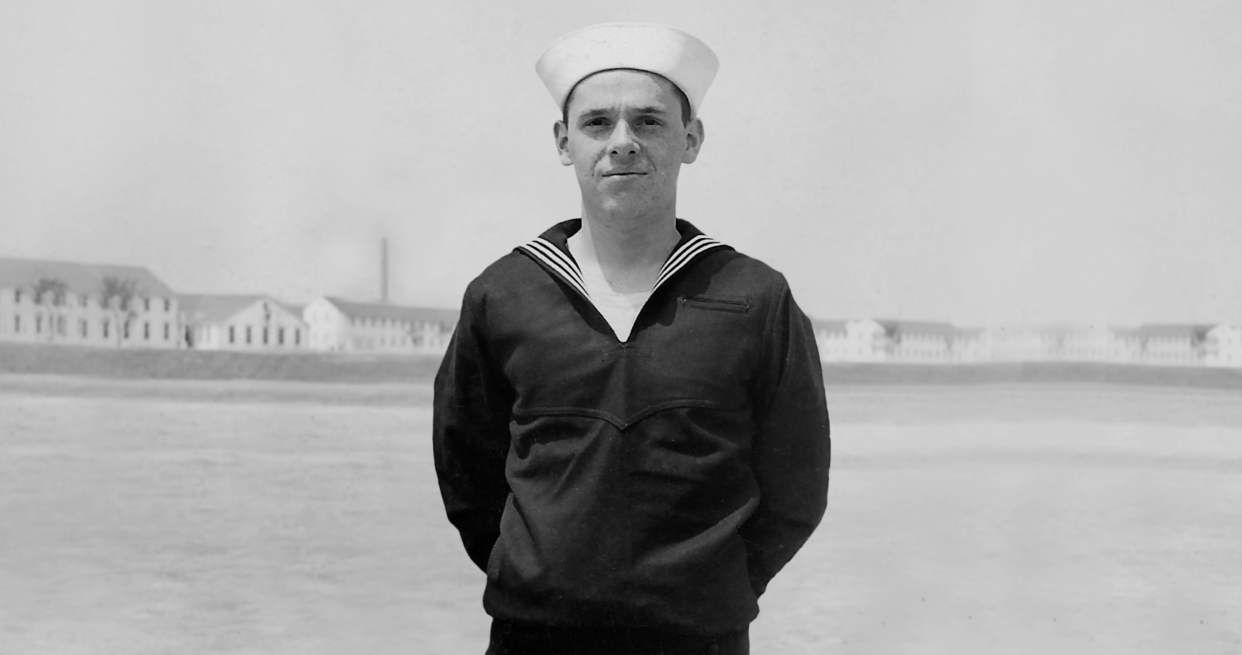
“I wanted to get into radar," he says. At the time, radar technology was seeing significant development and deployment, though its origins date back to the 1930s. "I’d heard about it and it was all very hush-hush."
He earned an electrical engineering degree and soon entered the Navy radar training program, where he operated radar and sonar systems in submarines. It was here, Goldfarb says, that his creativity reached new heights.
"In a submarine, where we go down a hatch and don’t come back up for two months, you bond with your shipmates," he says. "That was a big help [in shaping ideas]."
He filled his journal with toy designs meant to stimulate learning and development skills, but as he soon realized, the industry wasn't ready to manufacture "educational toys." After the war, he pitched a set of three such toys to a company in Chicago. He received his first contract offer, but the executive in charge was only interested in one item, not the set.
"'They're part of a line. You’ve gotta take the whole line,'" he pleaded, but they wouldn't budge. Ultimately, he refused to sell one without the others, assuming other companies would counter. They didn't. "I was very inexperienced," he says now.
The breakthroughs
Goldfarb's wife, Anita, who passed away in 2012, financially supported him in those early years so he could devote his time to inventing toys. When all seemed lost, his big break arrived in the form of chattering teeth.
Goldfarb developed a prototype for the Yakity-Yak Talking Teeth using a set of false teeth from his dentist as a model after seeing an ad in the newspaper for false teeth. He presented it to toy promoter Marvin Glass, who then took it to novelty king Irving Fishlove.
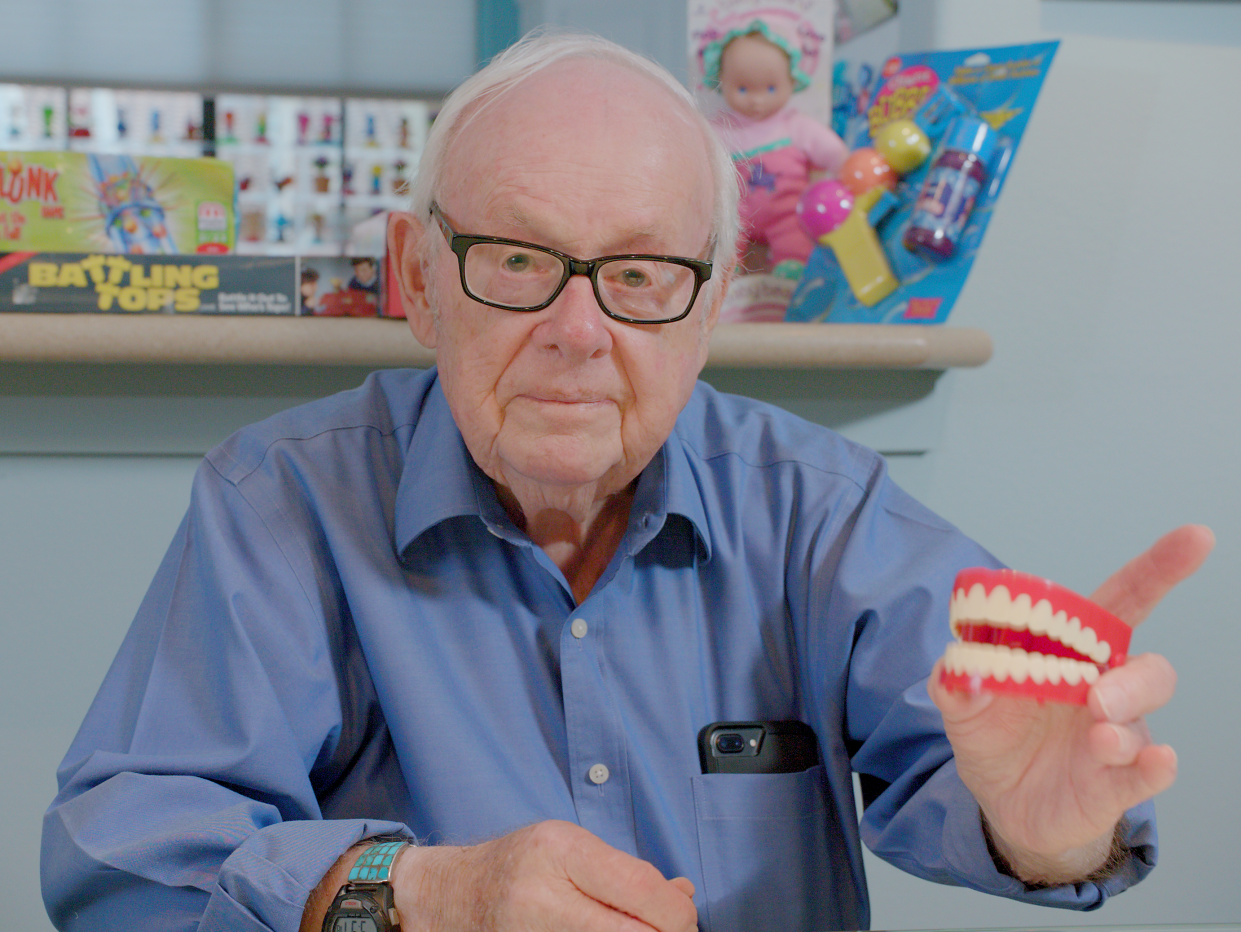
Fishlove purchased the toy for $2,500. Glass took a majority of the profits, which made Goldfarb regret the sale altogether. Always the optimist, the inventor saw it as a learning opportunity more than anything else. From then on, he says, he vowed only to "license, not sell," his inventions — a commitment he kept for the rest of his career.
Then came another breakthrough: the Merry-Go-Sip, a child's drinking cup with a carousel lid top that would spin when a child drank from the attached straw. It became a commercial triumph after being showcased at the 1949 Toy Show in New York City.
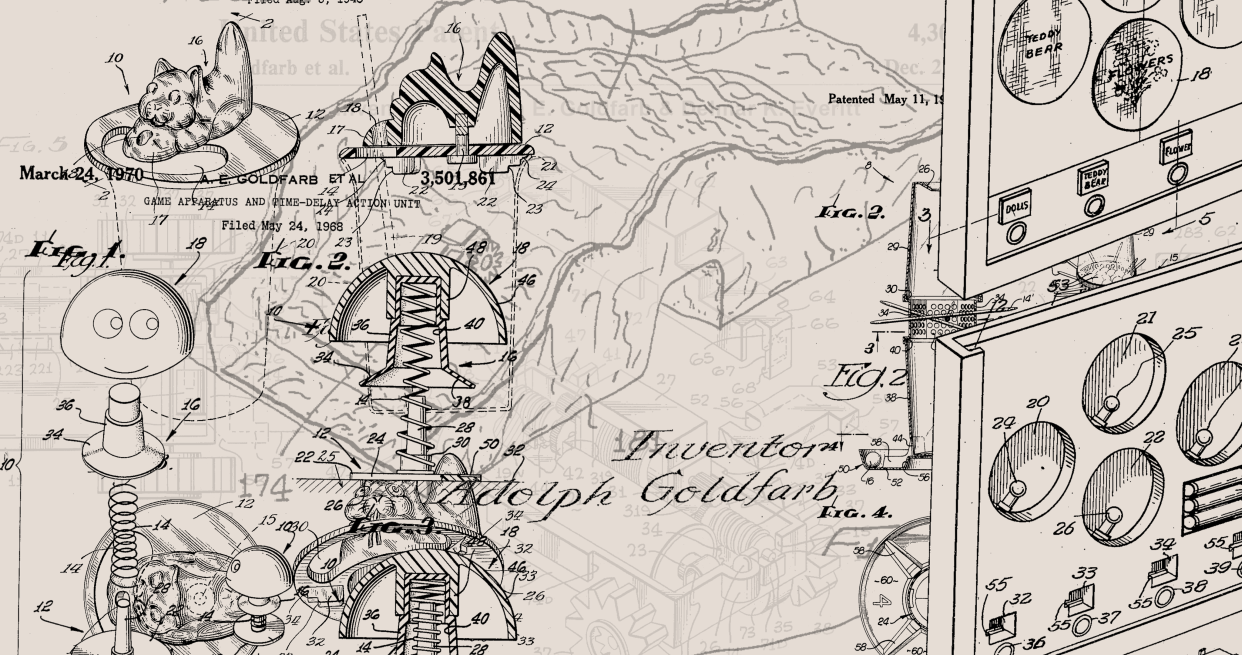
Parents began writing letters, praising Goldfarb for helping their children drink their milk without fuss. "That's when I realized that toys for education, toys for play, toys to help children develop, even for children to eat, are all part of what a family needs," he says. "And it's still that way."
Success was followed by a series of rejections, but as he explains, Goldfarb continued to remain "independent, never working for a company" as an in-house inventor. "I wanted the freedom," he says.
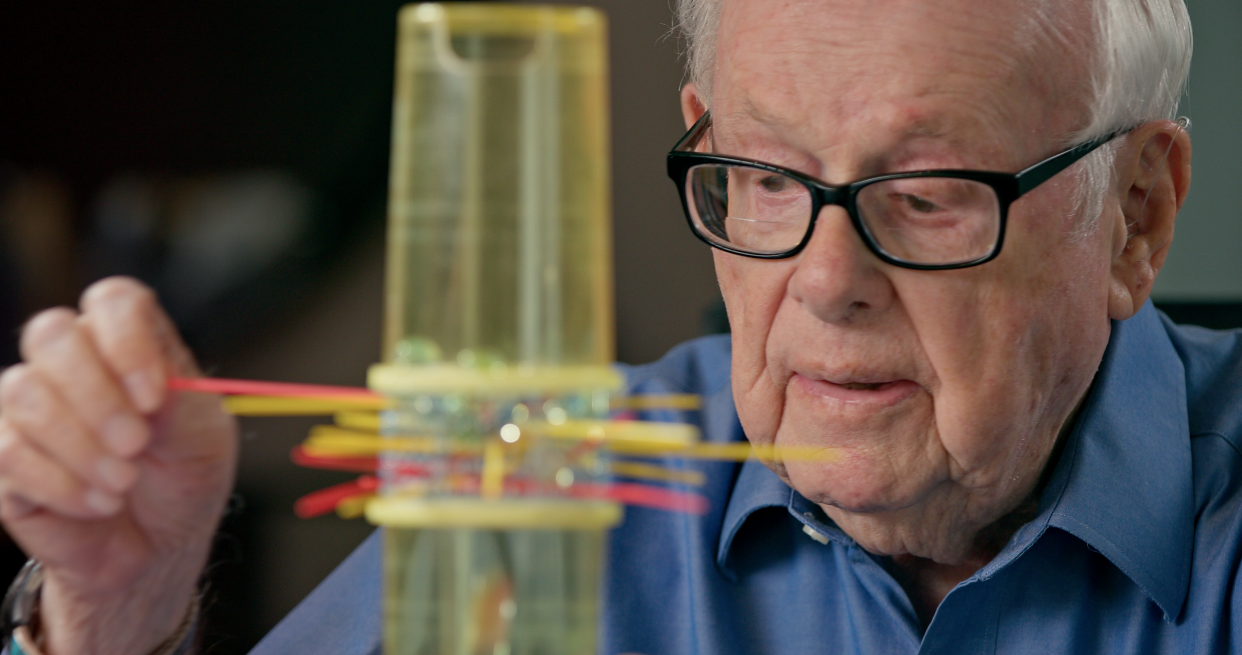
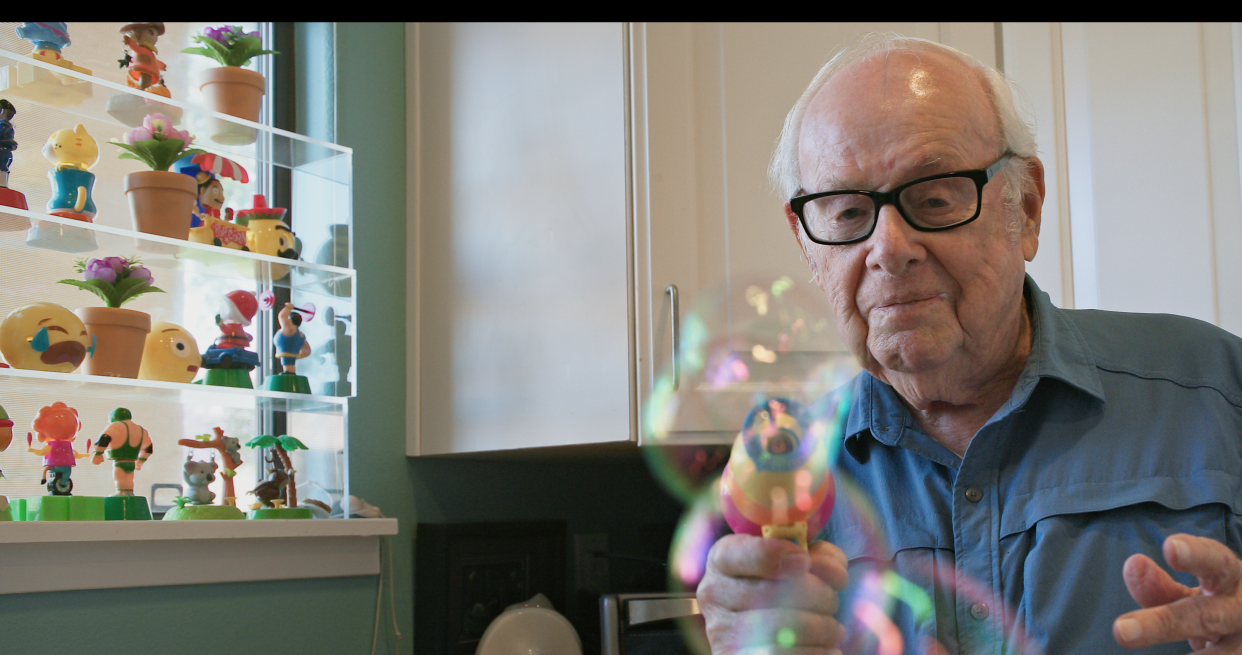
Goldfarb continued to dream up ideas, like the plastic molding kit Vac-U-Form and KerPlunk, a game where players insert rods into holes in a tube with marbles placed on top, both of which he licensed to Mattel.
Then came the Bubble Gun, which was initially turned down by "nearly every" major toy manufacturer until entrepreneur John Osher invested the money to make it. It became a huge success at toy shows, and to this day, continues to see various iterations in the toy market.
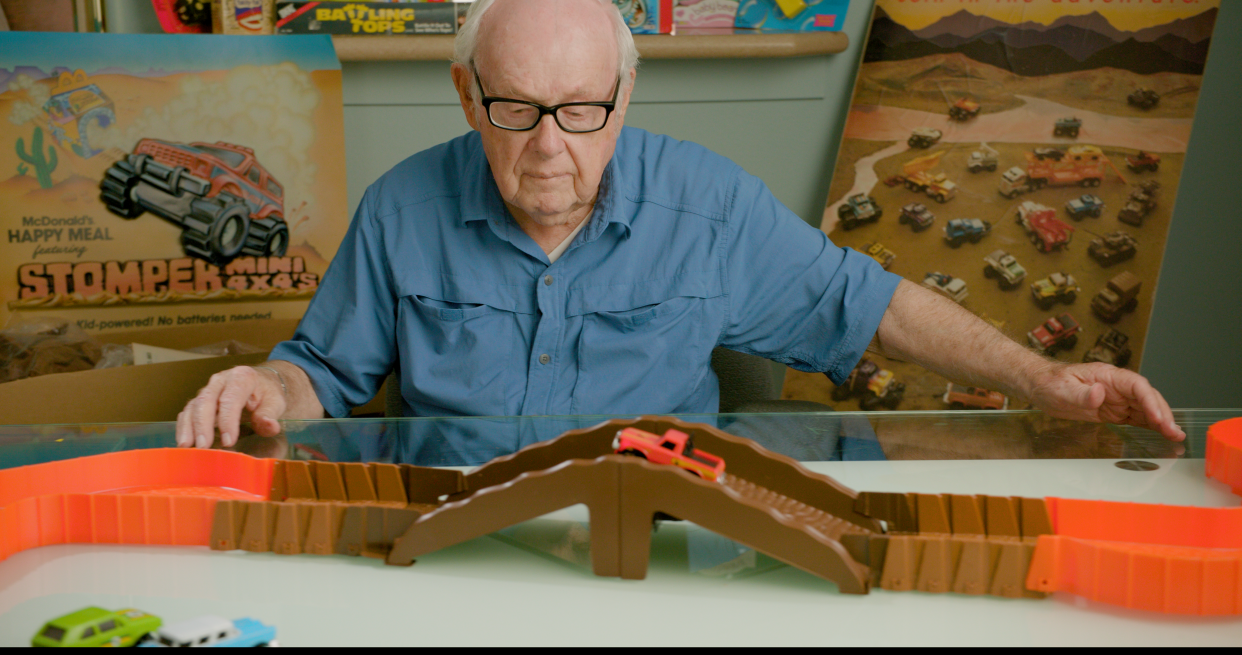
One of his most successful inventions were Stompers, motorized trucks that were a favorite among kids, selling millions of units in the 1980s. They later inspired him to design one of the first Hot Wheels video games for Mattel.
"They were copies of real vehicles, but we changed them a little to make them different," he says. "Today, there are thousands of adult collectors of these toys."
He’s not done
Today, Goldfarb continues to create and craft items by hand in his workshop, which is located at his retirement community in Southern California.
"I'm just doing what I do," he says, crediting being "active and creative" as his secret to longevity.
When looking back on his career, Goldfarb says he doesn't have a favorite toy. What he does know is that the toy industry hasn’t changed much, and neither has he.
"The companies that make toys need to have new lines of toys every year, so they are very receptive [to new ideas]," he says. "And I got a very good imagination, so that helps me too."
Eddy's World is available to stream on the PBS App.
